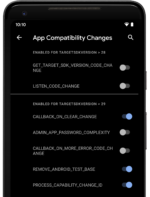In the rush to capitalize on new mobile markets and revenue channels, I have seen many instances of companies hastily developing and releasing mobile apps without thoroughly understanding why they are creating this product or how it could hurt their brand more than it could help. This often happens because companies equate the development of a mobile app with the creation and launch of a website 15 years ago. This is a false analogy. Since there was no universal Internet adoption or the infrastructure for dissemination of complaints, a mistake on an early website could be identified and fixed without much damage to reputation.
With mobile, you get no second chances. While the technology may be relatively new, adoption of mobile has already hit critical mass wherein any mistake will be noticed and spread (via social media) before you can fix it, hurting your company’s reputation (not to mention loss of revenue and customers). Your app has to work the first time. This cannot happen unless you know what you want from your app before it is developed and how to best develop it before it is deployed. Never release an app without a well-defined strategic plan or goals in place. It will do more harm than good.
Before your developers begin writing code, define the role of the app within larger company goals. Is this app going to be for internal or external use? Is it meant to increase revenue, brand awareness, or both? Will you ask users to pay for the app? Is it what your users want?
The initial internal/external decision is usually an easy one to make. Where it becomes tricky is when an internal app goes public or a public app goes viral. Since the app was not originally designed to scale in that manner, the increased user load could quickly overwhelm your back-end infrastructure, disrupting productivity across all applications sharing the same systems and networks, and impacting all users, not just mobile users.
If you decide to release a free or freemium mobile app, you need to be as prepared as you would be for a paid app. It is perceived that people expect less from a free app and will generally tolerate fewer features or slightly slower performance, yet I continue to see where this approach results in a significant onslaught of negative app store reviews, app abandonment, loss of customers, and loss of brand image. Your free app can do more harm than good.
Even if the app is not related to core business processes, a bad user experience can have disastrous consequences. I have worked with a large financial institution that sponsored a bike-sharing program, which included a mobile app for checking out and returning the bikes. Unfortunately, the app performed poorly. This reflected negatively on the institution’s brand and actually caused some investors to transfer their funds to other banks. Know the risks of branding your app. While you want to get your name in front of consumers or clients, the company name or logo that is most prominent on the app will bear the brunt of criticism if the app does not perform.
Even with the role of the app aligned with business goals, without understanding what your users want, the app will be pointless. Survey them to provide an app that is actually needed. Does your sales force really need another CRM app, or is their current app sufficient for both their needs and business requirements? Are your customers clamoring for a mobile payment app or a digital wallet? Combining their expectations with your business goals will help you create the best product.
With business goals strategically defined and aligned with user needs, development approaches must be thought through before any code writing can begin. Keeping in mind both current and future plans and total life-cycle costs, what is the best way to develop your app?
If you decide to leverage an existing mobile development platform, you can save initial time and money, but run the risk of having bloated components or objects within the app, potentially resulting in poor end-user experience and back-end infrastructure impacts. This is how, if not properly designed and tested, an app created using a mobile development platform can do more harm than good.
While developing a mobile mirror of your website might seem the easiest and most cost-effective development approach, remember that mobile is not the Web in terms of network, data retrieval, or user behavior or expectations.
Many links and graphics might be perfect for your website. The high-bandwidth, low-latency connection allows images to download quickly, making your site pretty to look at and perform well. The many links provide a useful way for users to navigate. Condensed to a mobile network and device, these pros become cons and your mobile app can do more harm than good.
Given the constantly changing connections and increased latency of most mobile networks, images can kill your app’s performance. If it is not 100% essential, leave it out. If it is, find a way to load it first or break it into smaller segments that don’t overtax your back-end resources or take forever to download.
Clicking on links is easy on a 14-inch screen with a mouse. Not so much on a 5-inch screen with large fingers. Same for images. Know the limitations of your devices and match your app development to fit.
Users are no longer wowed that your company has a mobile app. They expect it, and they expect it to work. Having a plan for your app increases the chance it meets or exceeds their expectations. Without one, your app is nothing more than a waste of time, energy and expense, a negatively reviewed thumbnail image in an app store.
Todd DeCapua is the VP of channel operations and Services for Shunra Software, which sells network virtualization and application performance test tools.






